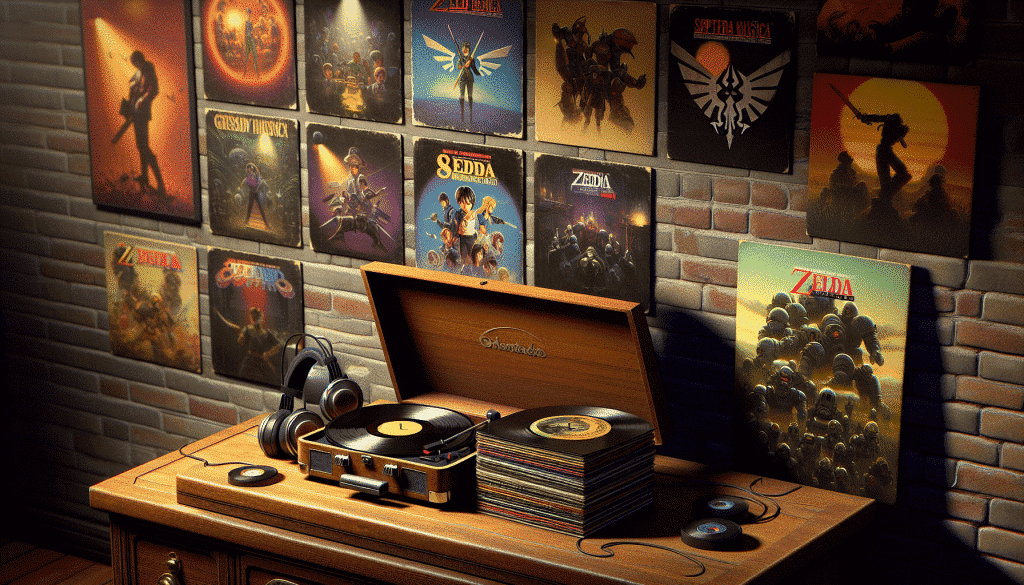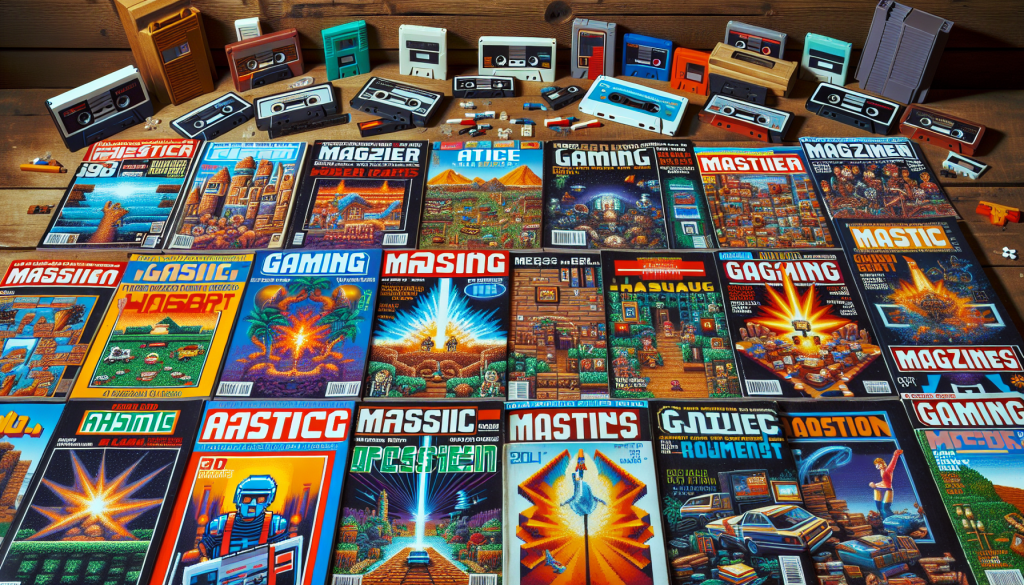Hey there! Have you ever wondered about the evolution of pixel art in gaming? It’s a fascinating journey that has shaped the way we perceive and appreciate video game graphics. So, grab your controller and let’s dive into the world of pixels!
Pixel art has come a long way since its humble beginnings. In the early days of gaming, developers had limited resources and hardware capabilities to work with. As a result, they had to rely on simple, blocky graphics made up of tiny squares called pixels. Remember those classic games like Super Mario Bros. or Pac-Man? They were the pioneers of pixel art!
But over time, as technology advanced, so did pixel art. Developers started pushing the boundaries of what was possible with these tiny squares, creating more intricate and detailed visuals. We saw the birth of iconic games like Final Fantasy VI and Chrono Trigger, where pixel art was used to evoke emotion and immerse players in rich, vibrant worlds.
Now, you might be wondering, what makes pixel graphics so appealing? Well, there’s something nostalgic and charming about the simplicity of pixels. They have a unique aesthetic that instantly takes us back to the golden age of gaming. It’s like looking at a digital painting created with limited colors and blocks, yet still manages to captivate us.
Moreover, pixel art allows for a level of creativity and imagination that is unparalleled. With just a handful of pixels, artists can bring to life intricate characters, stunning landscapes, and breathtaking animations. It’s a testament to their skill and mastery of the medium.
So, how do artists create pixel art for games? Well, it’s not as simple as it looks. There are various techniques and tools involved in the process. One common approach is to start with a small canvas and gradually build up the image by placing individual pixels. This requires a keen eye for detail and an understanding of color theory.
Artists also rely on dithering, a technique where different-colored pixels are strategically placed to create the illusion of additional colors. This adds depth and texture to the artwork, making it more visually appealing. Additionally, shading and highlighting techniques are used to give objects a three-dimensional look, even though they are made up of flat, square pixels.
It’s important to appreciate the artistry and skill of pixel artists in gaming. They work tirelessly to create visually stunning and immersive experiences for players. Every pixel is carefully placed and every color choice is deliberate. It’s a labor of love that deserves recognition.
So, the next time you pick up a game with pixel graphics, take a moment to appreciate the evolution of pixel art. Marvel at the creativity and talent behind those tiny squares that make up your favorite characters and worlds. And remember, pixel art is not just a nostalgic throwback, but a timeless art form that continues to captivate and inspire gamers all over the world.
The Aesthetic Appeal of Pixel Graphics in Gaming
When it comes to gaming, visuals play a crucial role in immersing players in the game world. From realistic 3D graphics to stylized artwork, there are countless visual styles that game developers can choose from. However, one style that has stood the test of time and continues to captivate players is pixel art.
Pixel art refers to the use of small, square-shaped pixels to create visuals in games. It may seem simplistic compared to the high-definition graphics we see today, but there is a unique charm and nostalgia associated with pixel art that cannot be ignored.
One of the main reasons why pixel graphics have such a strong appeal is their ability to evoke a sense of nostalgia. Many of us grew up playing games on platforms like the Super Nintendo and Game Boy, which relied heavily on pixel art. Seeing pixelated characters and environments brings back fond memories of our gaming experiences from the past.
Moreover, pixel art has a timeless quality that allows it to transcend the limitations of technology. While realistic graphics can quickly become outdated as technology advances, pixel art remains visually appealing regardless of the era. It’s like looking at a beautiful piece of pixel art from the 80s and still being able to appreciate its artistic value.
Another reason why pixel graphics continue to hold a special place in the hearts of gamers is their ability to spark the imagination. With the limited number of pixels available, pixel artists have to rely on creativity and ingenuity to bring their visions to life. This often leads to unique and iconic character designs and environments that leave a lasting impression on players.
Pixel art also allows for a level of abstraction that can enhance gameplay. By simplifying visuals into pixelated form, important gameplay elements can be highlighted and easily understood. This is especially important in fast-paced games where clear visuals are crucial for player comprehension and reaction time.
Creating pixel art for games requires a specific set of techniques and skills. Pixel artists use tools like pixel editors to meticulously place individual pixels and create intricate designs. They also make use of techniques like dithering, shading, and color palettes to add depth and detail to their artwork.
For aspiring pixel artists, it’s important to practice these techniques and experiment with different styles. Building a strong foundation in traditional art principles can also greatly benefit pixel art creation. It’s a combination of technical skill and artistic vision that allows pixel artists to create stunning visuals that captivate players.
In conclusion, the aesthetic appeal of pixel graphics in gaming is undeniable. The nostalgia, timeless quality, and imaginative potential of pixel art make it a beloved style that continues to thrive in the gaming industry. Whether you’re a player or an aspiring pixel artist, take the time to appreciate the artistry and skill behind pixel graphics and embrace the magic they bring to the gaming world.
Techniques Used in Creating Pixel Art for Games
Creating pixel art for games is a fascinating process that requires a combination of creativity, precision, and technical skills. Pixel art has its roots in the early days of gaming when limited graphics capabilities necessitated the use of small, blocky pixels to represent characters, objects, and environments. Over time, pixel art has evolved into a unique art form, with its own set of techniques and tools.
1. Pixel Placement
One of the fundamental techniques in creating pixel art is the meticulous placement of individual pixels. Every pixel is carefully positioned to form the desired shape, whether it’s a character, a background element, or a landscape. Pixel artists often work on a grid, which helps them maintain consistency and precision in their artwork.
When creating pixel art, artists need to consider the limited resolution and color palette of the game. Each pixel counts, so they must make deliberate choices to convey the desired image within these constraints. This requires a keen eye for detail and an understanding of how different color combinations can create the illusion of depth and texture.
2. Color Theory
Color plays a crucial role in pixel art, as it helps bring the visuals to life and set the mood of the game. Pixel artists must have a solid understanding of color theory to effectively utilize the limited palette available to them. They need to consider the relationships between colors, such as complementary and analogous colors, to create depth and harmony in their artwork.
Furthermore, pixel artists must also consider the limitations of the display systems on which their games will be played. Different platforms may have specific color restrictions, such as a limited number of available colors or color depth. Adhering to these constraints while still creating visually appealing art requires both technical knowledge and artistic talent.
3. Dithering and Anti-aliasing
Dithering is a technique used in pixel art to create the illusion of additional colors by strategically placing pixels of different colors next to each other. This technique is particularly useful when dealing with limited color palettes, as it allows artists to add shading and gradients to their artwork. By carefully arranging pixels of different colors, artists can create smooth transitions and textures that would otherwise be impossible to achieve.
Anti-aliasing, on the other hand, is a technique used to soften the edges of pixel art. It involves adding additional pixels of intermediate colors along the edges of objects to create a smoother appearance. Anti-aliasing helps reduce the blocky, jagged look often associated with pixel art, giving it a more polished and refined look.
4. Animation
Pixel art is not limited to static images; it is also commonly used in game animations. Creating pixel art animations requires breaking down the movement into a series of frames, with each frame representing a different pose or position. Artists must carefully consider the timing, fluidity, and exaggeration of each movement to create visually appealing and engaging animations.
Pixel artists often use specialized software and tools, such as pixel editors and animation software, to streamline their workflow and create precise and efficient animations.
5. Iteration and Refinement
Creating pixel art is an iterative process that involves constant refinement and adjustment. Pixel artists often start with rough sketches and gradually refine their artwork by iteratively adding and removing pixels. They pay close attention to feedback from their peers or game developers, making necessary improvements to ensure the artwork aligns with the game’s vision and aesthetic.
It’s important for pixel artists to embrace the iterative nature of the creative process and not be afraid to make changes or start over if needed. This willingness to iterate and refine is what ultimately leads to the creation of stunning pixel art that captivates players.
Pixel art is a labor of love that requires a unique blend of artistic skill, technical knowledge, and attention to detail. The techniques mentioned above are just a glimpse into the intricate world of pixel art creation. The next time you play a game with pixel art graphics, take a moment to appreciate the craftsmanship and dedication that went into creating those charming, nostalgic visuals.
Appreciating the Artistry and Skill of Pixel Artists in Gaming
When we think about the artistry involved in video games, we often picture highly detailed 3D graphics or stunning animations. However, it is important not to overlook the incredible talent and skill of pixel artists. These artists work with limited colors and resolution, yet manage to create captivating and visually appealing game worlds.
Pixel art, which refers to the use of pixel-based graphics, has a long and storied history in the world of gaming. It originated in the early days of video games, when hardware and memory limitations necessitated the use of small, blocky pixels to represent characters and environments.
Despite its humble beginnings, pixel art has evolved into a respected and beloved art form. Pixel artists today skillfully use their understanding of color theory, composition, and pixel placement to create intricate and visually stunning game assets.
One of the reasons pixel art continues to be appreciated is its unique aesthetic appeal. The deliberate use of limited colors and low resolution can create a sense of nostalgia, harkening back to the early days of gaming. This aesthetic choice can also evoke a sense of simplicity and charm that resonates with players.
Another aspect that makes pixel art special is the amount of skill and dedication required to create it. Pixel artists must carefully consider every pixel they place, ensuring that each one contributes to the overall composition and communicates the intended visual message. This level of precision requires a deep understanding of art principles and an eye for detail.
Pixel artists also employ various techniques to enhance the visual appeal of their creations. Dithering, for example, is a technique that involves using patterns of alternating pixels to create the illusion of more colors and smoother gradients. This technique, when executed skillfully, can add depth and texture to pixel art.
Another technique commonly used by pixel artists is the use of shading to create volume and dimensionality. By carefully placing darker and lighter pixels, artists can make their characters and environments appear three-dimensional, even with the limited resolution of pixel art.
It is important to recognize and appreciate the artistry of pixel artists in gaming. Their work adds a unique and visually appealing element to the gaming experience. Next time you play a game with pixel art, take a moment to admire the attention to detail and the skill required to create such captivating visuals.












